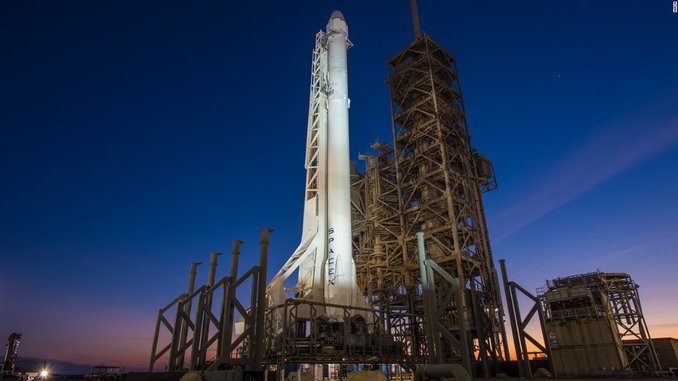
After a lull in launch activity this fall, SpaceX teams at Cape Canaveral are preparing for up to four Falcon 9 missions in December to close out 2019 with a surge of launches.
SpaceX has launched just one Falcon 9 rocket since Aug. 6, but the company’s launch cadence is set to return to its normally brisk pace beginning Dec. 4 with the planned liftoff of a Dragon resupply mission to the International Space Station.
Launch teams at Cape Canaveral’s Complex 40 launch pad are readying a Falcon 9 rocket and Dragon cargo capsule for the journey to the space station. Launch on Dec. 4 is scheduled for 12:51 p.m. EST (1751 GMT), roughly the moment when the Earth’s rotation brings Florida’s Space Coast under the space station’s ground track.
The Falcon 9’s first stage is expected to attempt a landing on SpaceX’s drone ship in the Atlantic Ocean after the Dec. 4 launch.
The Dragon supply ship will deliver several tons of equipment to the station, including more than a ton of specimens and hardware for scientific experiments, such as an investigation into flame behavior in microgravity, and 40 mice scientists are launching for a study of muscular degradation during spaceflight.
Assuming an on-time launch Dec. 4, the logistics mission will arrive at the station Dec. 7 and return to Earth with cargo in early January for a splashdown in the Pacific Ocean.
The cargo mission will be the SpaceX’s 19th Dragon resupply flight since the company began operational deliveries to the station in October 2012.
Resupply missions under SpaceX’s current $3 billion Commercial Resupply Services contract with NASA will end with the 20th cargo flight in March. The final Cygnus resupply mission under a similar CRS contract with Northrop Grumman launched earlier this month.
NASA has awarded separate follow-on cargo delivery contracts to Northrop Grumman, Sierra Nevada Corp. and SpaceX to meet the space station’s logistics needs through at least 2024, with each company guaranteed a minimum of six resupply missions.
SpaceX workers will gear up for a quick turnaround before the next Falcon 9 launch from pad 40 as soon as Dec. 15 with a commercial communications satellite jointly owned by Tokyo-based Sky Perfect JSAT Corp. and Kacific, a startup telecom company headquartered in Singapore.
The launch window Dec. 15 opens at 7:10 p.m. EST (0010 GMT on Dec. 16).
The JCSAT 18/Kacific 1 spacecraft was built at Boeing’s satellite factory in El Segundo, California. According to Kacific, the satellite will weigh around 15,000 pounds (6,800 kilograms) fully fueled for launch.
A Falcon 9 rocket will deploy the JCSAT 18/Kacific 1 satellite in an elliptical transfer orbit, then the spacecraft will use its on-board propulsion system to reach a circular geostationary orbit more than 22,000 miles (nearly 36,000 kilometers) over the equator. The satellite will maneuver into a position over the Asia-Pacific to begin a planned 15-year service life.
JSAT will use the satellite’s Ku-band capacity to provide communication services over Japan and the broader Asia-Pacific region, with a coverage range extending from Indonesia and Southeast Asia to coastal China and Eastern Russia.
Kacific’s mission will utilize the satellite’s Ka-band payload, which includes 56 spot beams delivering up to 60 gigabits per second of data throughput capacity, the company said.
Meanwhile, another Falcon 9 rocket will be prepared for launch from pad 39A at the nearby Kennedy Space Center for a high-altitude abort test of SpaceX’s Crew Dragon spacecraft, a vehicle designed to carry astronauts into orbit beginning next year.

Be the first to comment